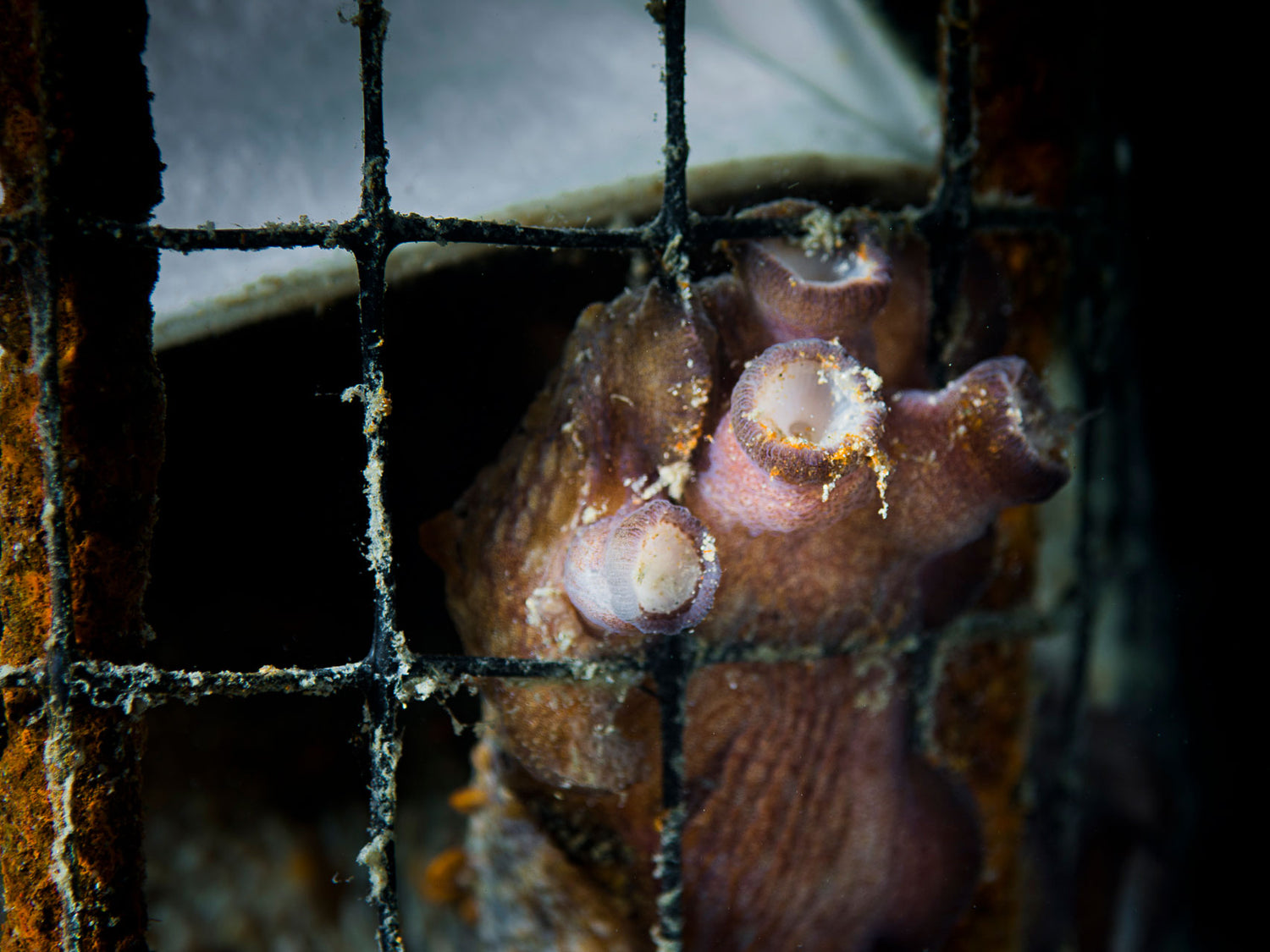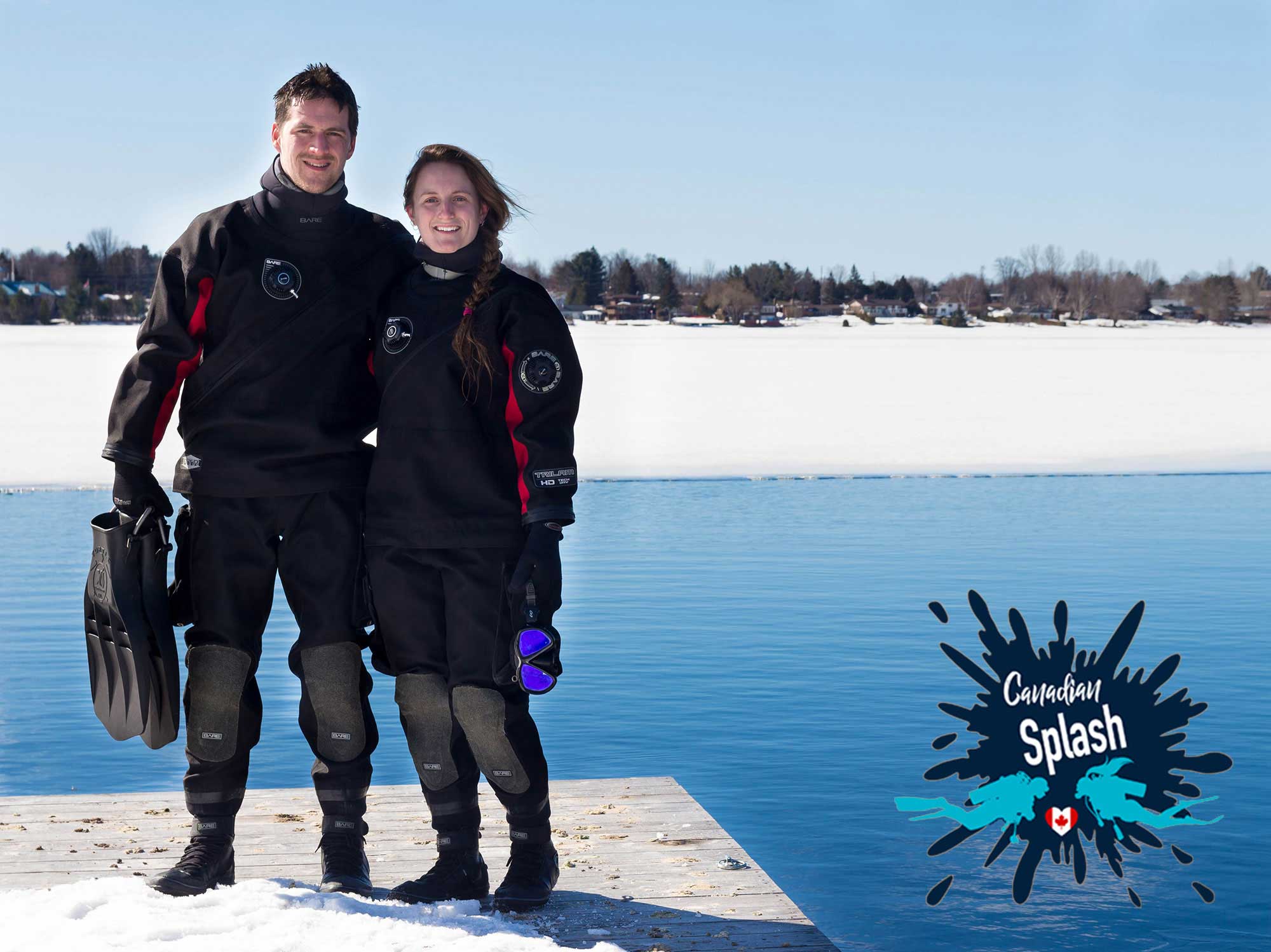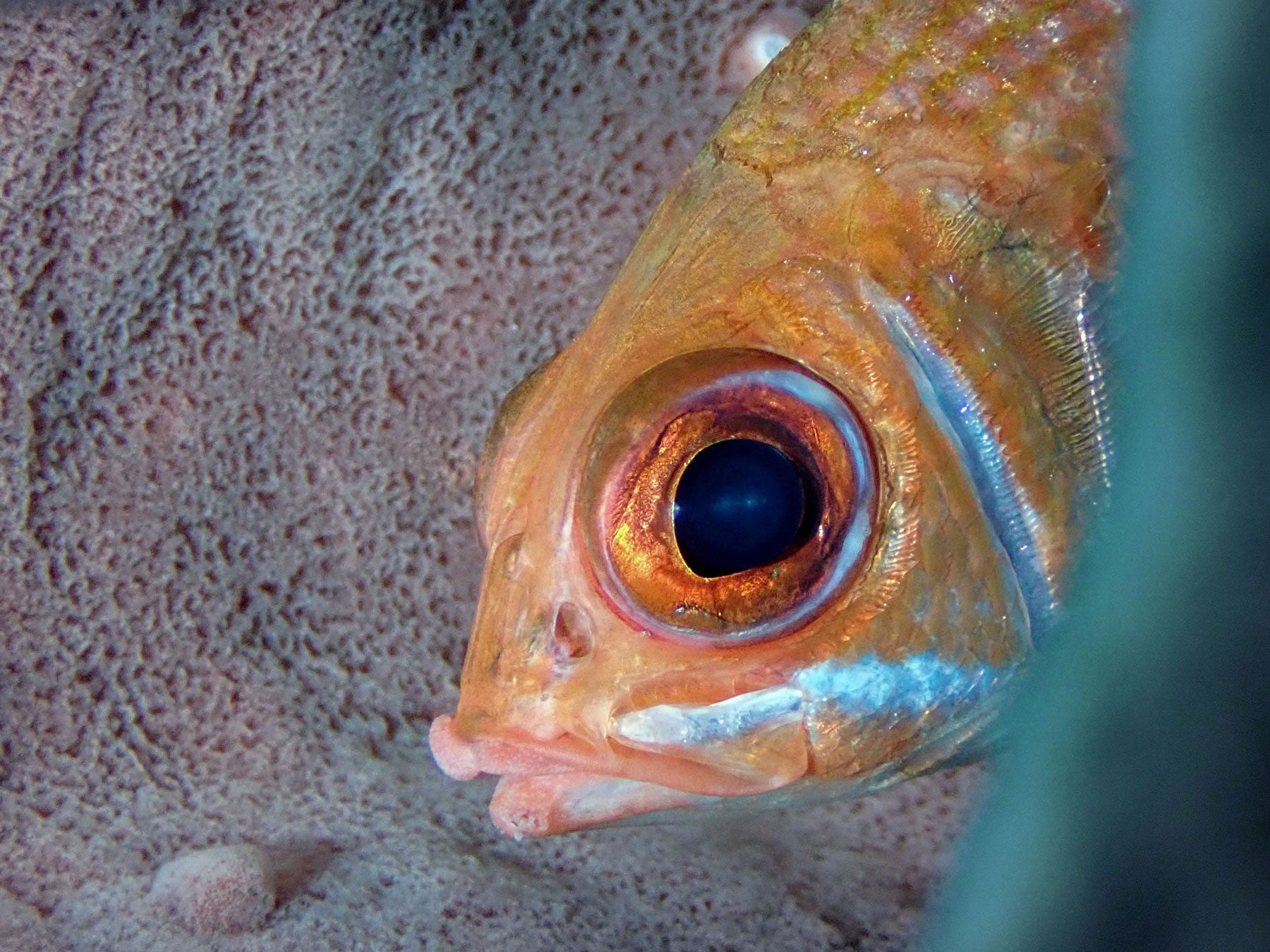Cover Photo Caption: To have the chance to see a scared octopus taking shelter under a plastic plate, inside the trap that holds him prisoner, makes you reflect on how the delicious octopus that you eat with potatoes, before being cleaned and cooked because of your choice, it was a living being. Torn off with extreme violence from his habitat, he struggled to survive. However, not seeing him scared, not hearing his silent screams, not seeing him die asphyxiated, the empty lairs increase and the decrease of specimens (even in a circumscribed stretch of sea), hardly someone will get to reflect upon his or her life choices.
By Ambassador Lorenzo Terraneo
This work, which lasted five years, demonstrates how every stretch of coastline around the world is affected, on a larger or smaller scale, by all the serious problems impacting the sea. The challenge is to use a different way to raise awareness in people: using what is "close," for instance any stretch of coast similar to the ones normally frequented by people, places that we perceive to lack major issues of pollution.
Another way is to utilize the delicate beauty of the images instead of the shock of witnessing the most striking cases of disasters caused by humankind all over the world. Moreover, this work wants to focus on how certain images seem "habitual" due to the wrong lifestyles and ways of thinking that we have adopted (without realizing), that must be understood and changed.
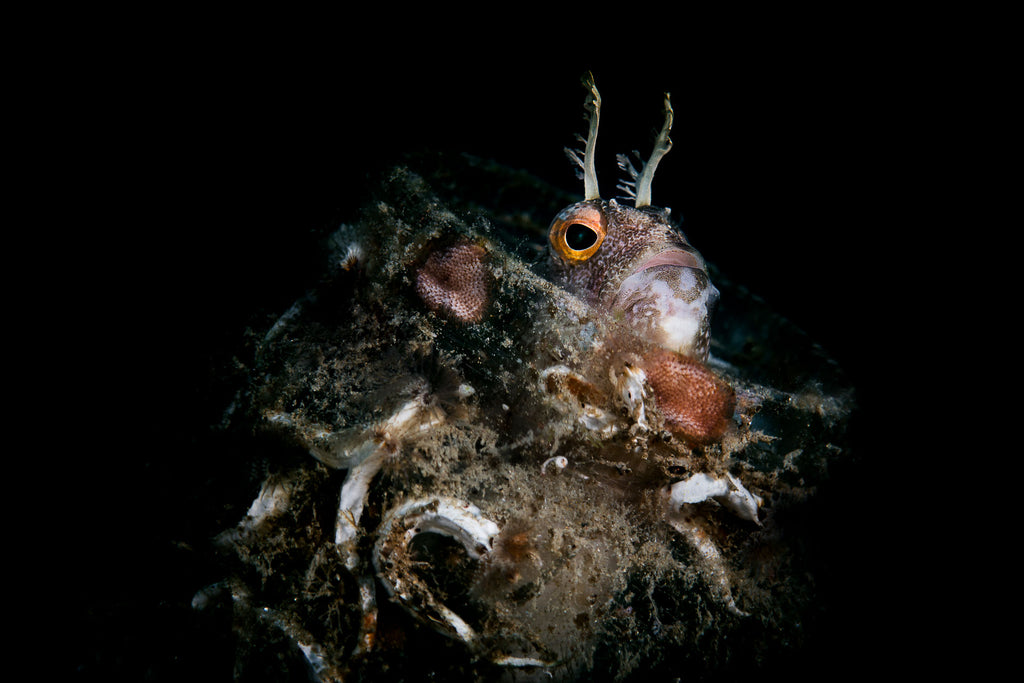
"Laying in a jar" This Bavosa (Blennius ocellaris) has laid its eggs inside a glass jar. She was lucky, because if it had happened in a plastic jar, she could have poisoned her little children. When I saw this scene, 24 meters deep in the sea, nothing could I do but annoy the mother, who unconsciously used some trash for her spawning, to shoot a picture to witness how waste is omnipresent in the sea.
The solution must start from the small actions of every man and woman, and not from a big and unexpected government intervention.
Diving means inhabiting the sea for a few tens of minutes, as one of the incredible living beings that populate it. The time I spend underwater is always a unique experience; a mixture of amazement, relaxation, return to origins, and introspection. Unfortunately, as diver, I am no longer just a witness of the incredible beauty of our seas, but also of their slow and inexorable decline.
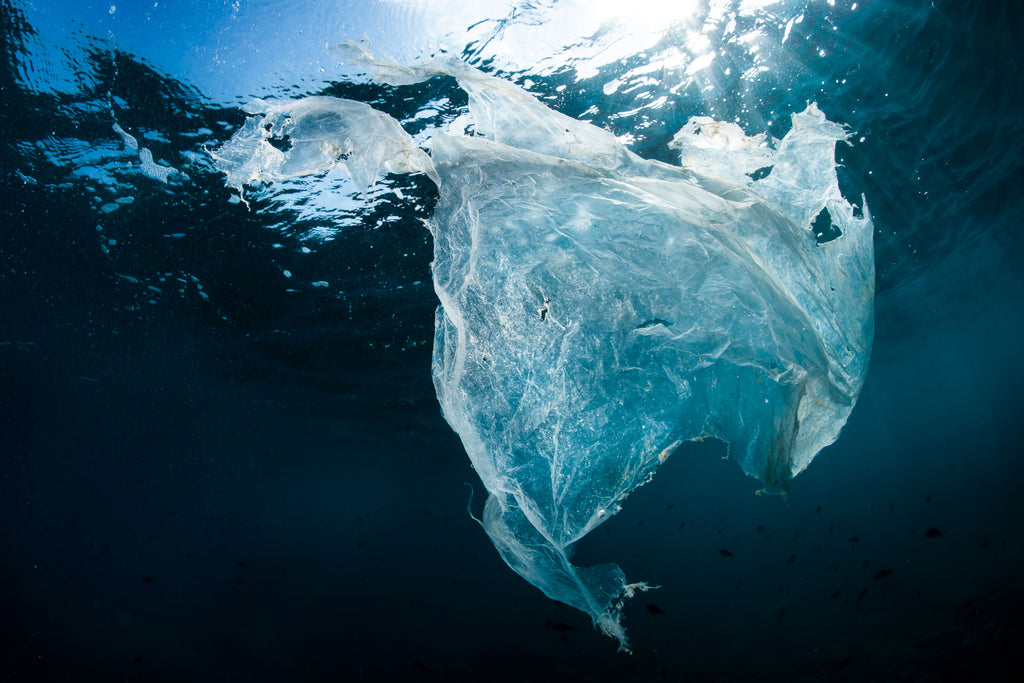
"This is not an American dream" Plastic bags, like all plastic in general, are perhaps the most serious problem of pollution caused by humankind to the sea. Plastic is not only mistakenly exchanged by many marine animals for food and therefore causes death by ingestion, but degrades over decades, becoming billions of tiny particles. Given the absence of barriers in the sea, these micro plastics spread everywhere. The big problem is that we do not know what long-term effects on life it has, but it has already been established that plankton, the base of the entire food chain, ingests it, and this way it arrives directly on our tables. Even the bivalve shells manage to catch these particles. If plastic waste on the surface of the sea is potentially cleanable because it can be collected, the micro plastics are too small, too numerous and too widespread to do so.
An article or a photo shoot about the current great environmental disasters all over the world, strikes but is often experienced as distant, as a "sporadic" fact, as the fault of others. I am referring myself, for example, to the plastic islands; to the bleaching and death of coral reefs; to the large and "popular" marine animals killed by the ingestion of plastic material thrown into the sea; to the extermination of the sharks just to obtain a soup from their fins.
However, when you are used to diving almost exclusively in the same small stretch of sea near home like me (in Italy in the Mediterranean Sea), you begin to know it thoroughly, to feel part of it, and to belong to it. Therefore, year after year, you realize that despite looking the same the sea is slowly dying.

"Laying eggs in a plastic tube" When I saw this little Castagnola (Chromis chromis) inside a plastic pipe of a building wreckage (thrown into the sea) at a depth of 18 meters, I did not immediately understand what it was doing. Looking closer I realized that she was carefully oxygenating the microscopic eggs she had laid inside. Unfortunately, the place she used is not natural -even if it seemed to her a good hiding place-, because the plastics release toxic substances that are directly in contact with her little children. That wreckage should have been disposed of properly, not thrown into the water to save money. The choice of the individual who made it falls on everyone. Marine organisms in the first place.
This happens everywhere. Marine species disappear from one year to the next. The population of fish is in slow but inexorable decline. The trash thrown away by man fills the seabed and occupies, with the consequence of becoming a toxic substrate, the natural habitat of the benthonic organisms that unknowingly colonize it.
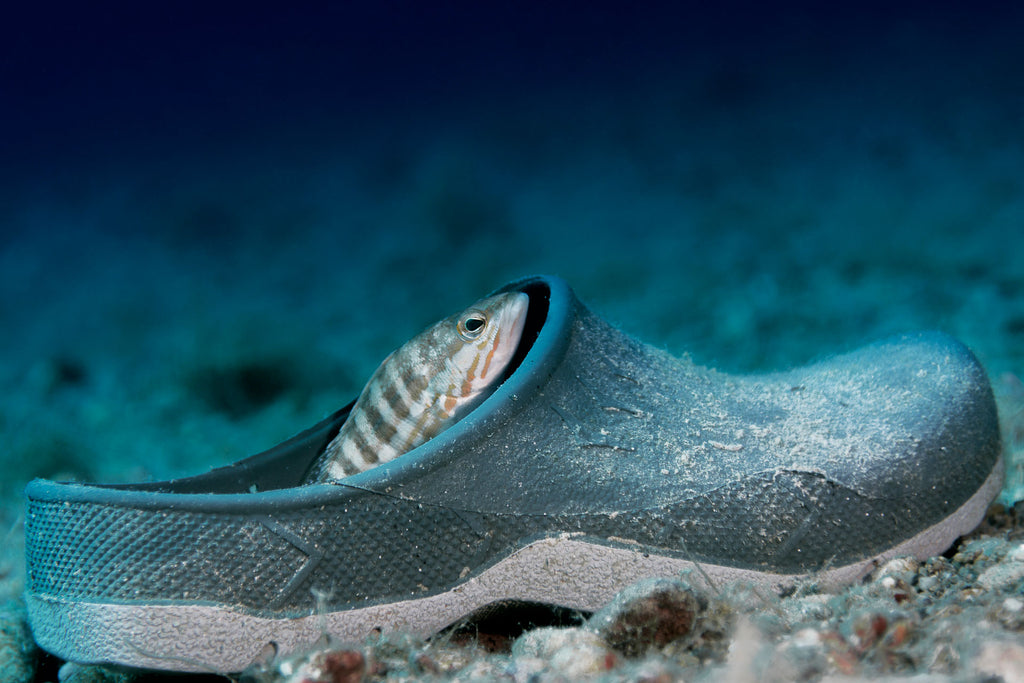
"Refuge in the trash" Marine animals do not know the difference between their natural environment and our trash. This small fish, a Perchia (Serranus cabrilla), has found shelter in an abandoned, plastic slipper at the bottom of the sea. The same slipper, if it had been made of wood, would not be a problem. This plastic object instead, hidden from view in the depths of the sea, will dissolve over the course of decades into billions of tiny micro plastics, potentially capable of spreading to all the oceans. We need to rethink our habits, the duration of the objects we use, almost all of which disposables, and the materials they are made of.
When you see a little Castagnola intent on lovingly oxygenating the eggs that she has deposited inside of a big plastic tube, a Perchia finding shelter inside a plastic slipper, or another very young specimen hiding inside of a soda can, you cannot but be upset. As an underwater photographer I try to bring evidence of the situation, because unfortunately everything that happens in the sea is far away from the sight of most people.

"Escape for victory" I had just started the dive when I suddenly saw a big Octopus coming towards me. Almost frightened by the unusual behavior, I instinctively took a picture, before realizing that the animal had been caught on a hook, and I was on the recovery line. The animal, frightened, tried to escape from his own unexpected death and fortunately soon after succeeded, freeing itself. Another example of “incidental catch”, since the line was prepared with a "pasturer" prepared for a large fish.
I had the opportunity to see an octopus accidentally caught on the hook, desperately trying to free himself while the fisherman recovered the line; or another taking shelter under a plastic plate inside the fish trap that holds him prisoner. Those moments make you understand that the delicious octopus that you eat with potatoes, was a living being before being cleaned and cooked because you wanted so. He fought to survive as he was torn off from his habitat with extreme violence. Without seeing him scared, not hearing his silent screams, not seeing him die asphyxiated, hardly anyone will reflect on the choices that should made. Hardly anyone sees the empty burrows increase and the decrease of the specimens even in a circumscribed stretch of sea.
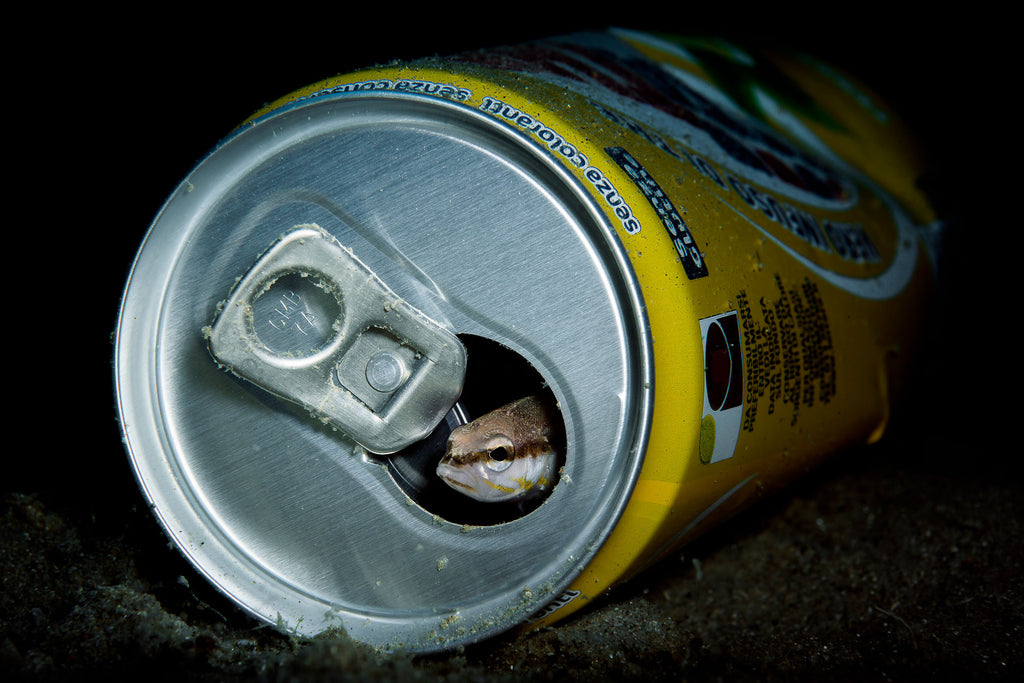
"Wrong house" Today's relationship between man and the sea can be summarized with the image of a banal soda can thrown into the sea. That can, drunk in less than 5 minutes, will remain in the water for the next 1000 years. When, at a depth of 28 meters under the sea, I saw this newborn Perchia (Serranus cabrilla) take refuge inside the can (smaller than the standard), I tried to approach her cautiously, without scaring her. I was able to shoot with a macro lens and an additional lens, to portray better the tiny size of the scene I was observing.
Today's state of the relationship between man and the sea can be summarized with a mundane can cast away. That can, the contents of which was drunk in five minutes, will remain in the water for the next 1,000 years.
A bag, a plastic slipper, or an abandoned fishing line, instead, lead us directly to the main, pressing and catastrophic problem of the micro plastic. Plastic has been a great invention, but its abuse due to the cheapness and production versatility has created perhaps the most serious threat to life on earth. All the plastic that arrives in the sea inexorably degrades over the decades into an incalculable number of tiny particles that end up dispersing everywhere and therefore no longer "recoverable." This is not a small problem: in 2006 300 billion plastic bottles were produced; in 2016 the number was 480 billion.

"Useless death" At about 15 meters deep I saw this small rock fish, of a species that is not commonly eaten or sold (Serranus cabrilla), with a piece of fishing line coming out of its mouth. Most likely, after being hooked, the fisherman's line got caught in a rock and was torn off. Before taking the picture I tried several times to grab the line to free the little fish from the hook, but the fish was too scared to let me get close, so he died shortly later for injuries or because it could no longer feed itself. The fish certainly was not a desired prey and would have been thrown back into the sea to die because the fisherman would not have known what to do with it. This same situation, called "accidental fishing", happens to thousands of fishes every day all around the world: fishes that are not useful for fishing, especially industrial, are torn from the sea, killed and thrown back dead in water.
Large plastic waste kills large animals by accidental ingestion, blocking their intestines. Micro plastics are absorbed by plankton and enter the entire marine food chain, all the way up to our tables. In this way we are already unwittingly swallowing the small particles. Even more than the "classic" pollution of the sea, hardly visible from the surface if not particularly serious, the pollution of the micro plastics is even more hidden and therefore a “distant" matter for us. My hope and my wish is that people will become aware that we can and must act now to avoid a catastrophe.
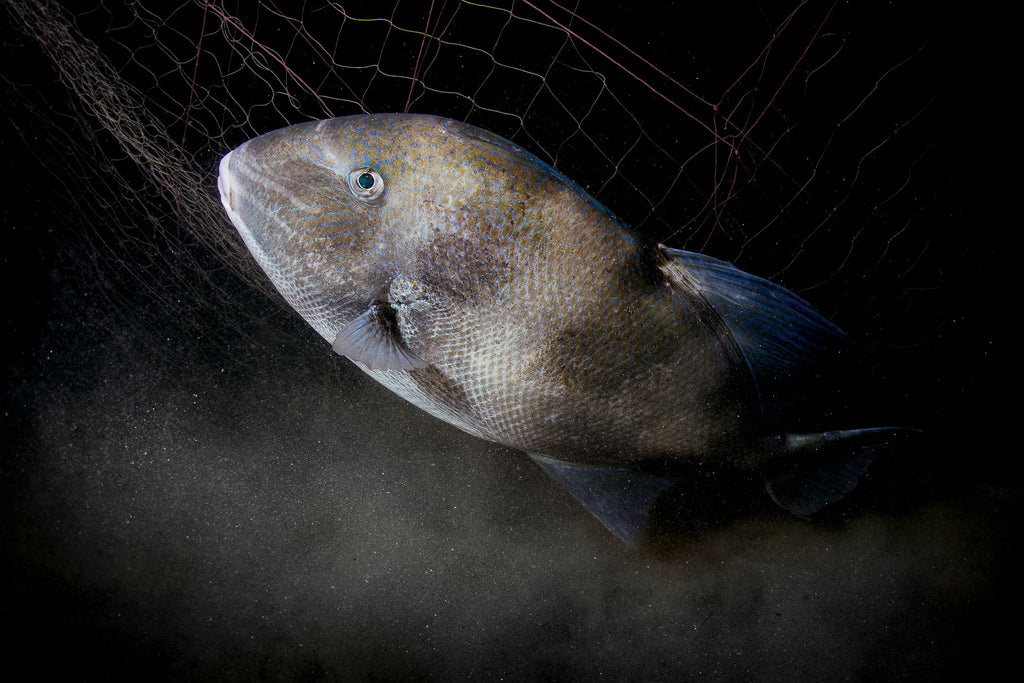
"In the net all the fish are the same" The fishing net does not distinguish which prey to trap. In this shot a big Triggerfish, fallen into a trap (accomplice was the darkness of the night), tried to free himself. Fortunately, shortly afterwards he managed to escape, but if he had been caught he would have been thrown back into the sea dead, or on deathbed, because it did not have any value for the fisherman, since it was neither edible nor marketable.
The question of an individual is always the same: what can I do? Everything! Start a human wave made of new personal behaviors, able to infect friends, relatives, and acquaintances, to arrive at a tsunami that modifies the collective consciousness in a short time. It is not enough to avoid dirtying the beach directly with a piece of paper, make a donation to an association, or simply get mad. We need to change our habits, evaluate every single of our purchases to give priority to what is sustainable for nature. So there should be as little as possible (if not zero) fish in our dishes, since in only 30 years (2048) the sea will be practically lifeless. Less consumption of plastics and disposable materials. More attention to everything that is purchased and consumed.
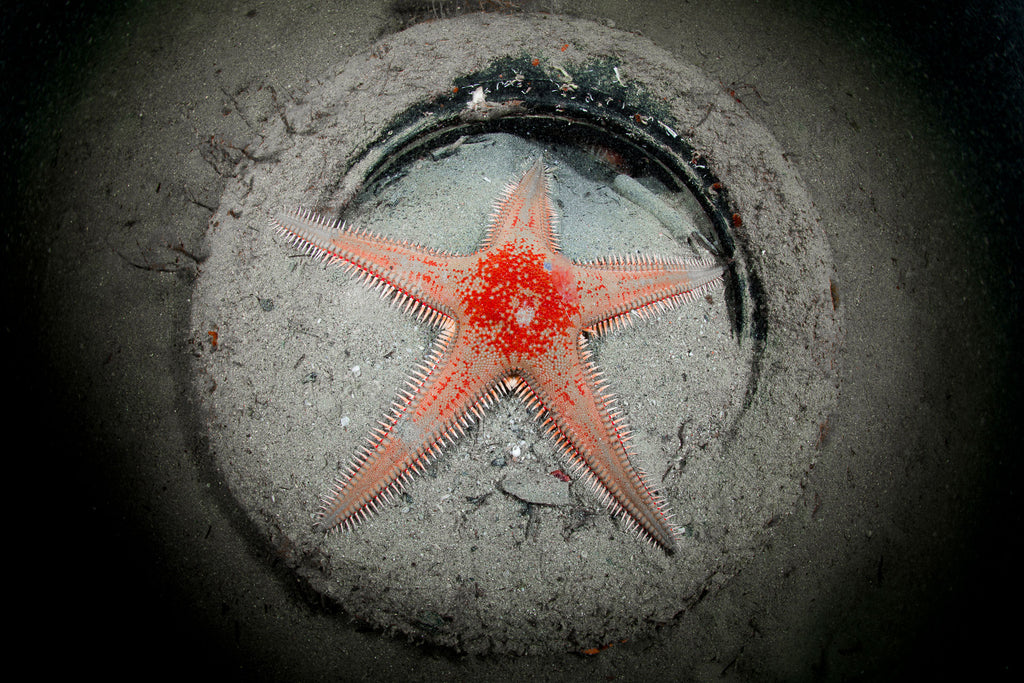
"Beware: it is not the shield of Captain America" A large starfish (Astropecten spp.) commonly used to walking on the bottom of the sea in search of food, here ‘walks’ over a truck tire thrown into the sea. That tire will dissolve after hundreds of years into billions of tiny particles of toxic micro plastic. This happens just because instead of disposing of the tire, as it should be done, the man threw it into sea, finding it faster and more convenient this way. Easily that same person, in a few years, eating some fish caught in the area, will ingest some particle of that tire, which through plankton has arrived at his table.
It is important not to fuel the production of all those markets that contribute incessantly to the generation of materials and substances that will remain for thousands of years to pollute the planet. By dint of hearing "howling to the wolf," we have become deaf and indifferent, and this is the big problem. Liking a post, picture, or video, or sharing a complaint, makes us feel like we did something relevant and sufficient. However, we have no more time to philosophize. Our seas are visibly dying, even if from the surface everything still looks incredibly beautiful.
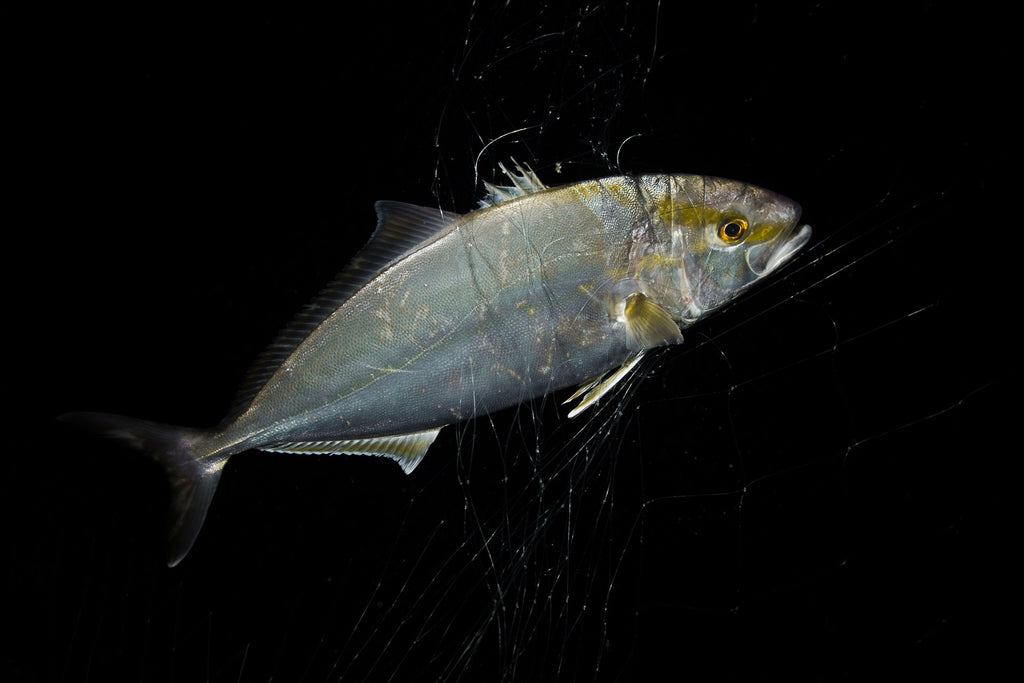
Catching fish is not inherently bad for the ocean, except for when vessels catch fish faster than stocks can replenish, something called overfishing. The number of overfished stocks globally has tripled in half a century and today fully one-third of the world's assessed fisheries are currently pushed beyond their biological limits.
All images Copyright © 2019 Lorenzo Terraneo
 Ambassador Lorenzo Terraneo, from Milan, Italy, works in the world of communication and web marketing and is a journalist enrolled in the Register. In 2010, he joined the strong passion for the sea and diving with the one for photography that always accompanied him since his first analog Nikon SLR. Passionate about marine and terrestrial biology, he is always looking in his photos to recreate the magical meeting between the wonders of nature and human emotions aroused by unusual shapes and colors. Therefore, not naturalistic photos in the strict sense, but moments of artistic beauty (nature art) according to the human canon, which nature expresses incessantly. Read more...
Ambassador Lorenzo Terraneo, from Milan, Italy, works in the world of communication and web marketing and is a journalist enrolled in the Register. In 2010, he joined the strong passion for the sea and diving with the one for photography that always accompanied him since his first analog Nikon SLR. Passionate about marine and terrestrial biology, he is always looking in his photos to recreate the magical meeting between the wonders of nature and human emotions aroused by unusual shapes and colors. Therefore, not naturalistic photos in the strict sense, but moments of artistic beauty (nature art) according to the human canon, which nature expresses incessantly. Read more...
Additional Reading
Ghost Gear: The Abandoned Fishing Nets Haunting Our Oceans Greenpeace Report
Protecting the Natural Resources of the Bahamas with Bahamas Girl
Coral Reef Restoration Program in Bonaire











